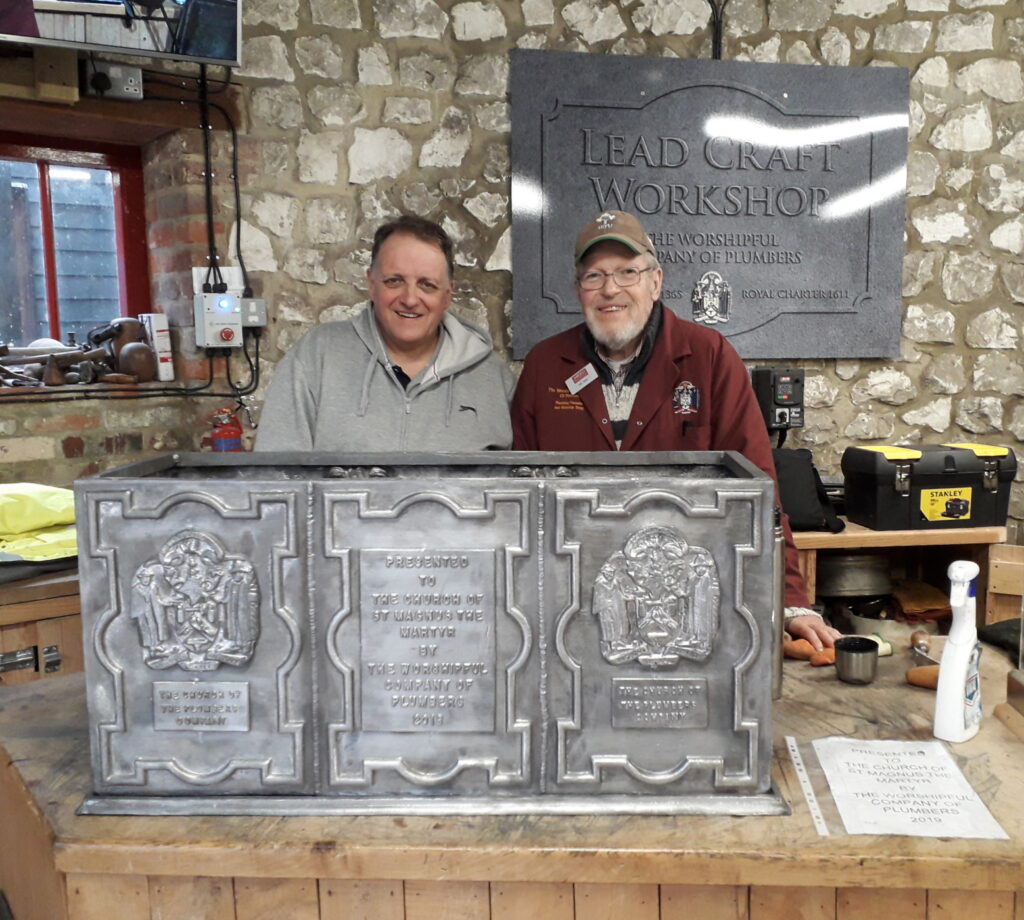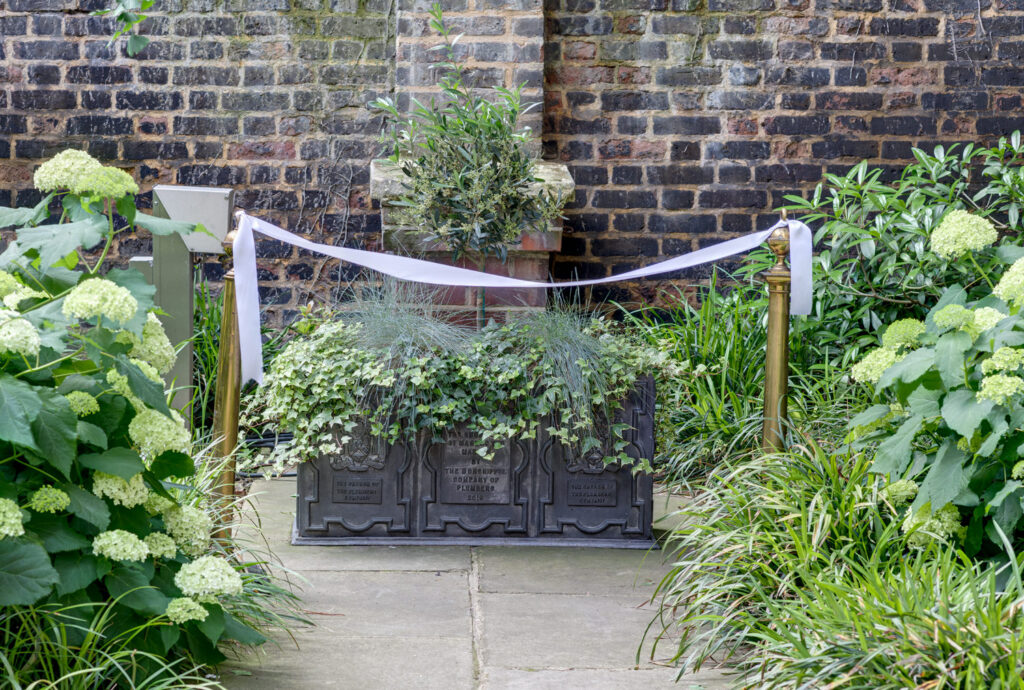
The lead planter was a gift of the Worshipful Company of Plumbers, having been cast by Peter and Deborah Cheesman, Phil Mead, Jane Palmer and Eddie McCourt at the Plumbers’ Company’s lead craft facility at Amberley Museum in West Sussex. The Company originally worshipped at St Michael Crooked Lane, but when that church was demolished in 1831 to make way for King William Street the parish was united to that of St Magnus, which became the Company’s church.

Plumbing is often thought of in terms of pipework for drinking or waste water, but historically it is the complex craft of working with lead. The term dates from ancient times and is derived from the Latin word for lead, plumbum. The origins of the plumbing craft can be traced back to Roman times when lead was used for piping, culverts and conduits. In the Middle Ages, plumbers were active in ensuring that the roofs of cathedrals, castles and other large buildings were waterproofed by lead.
The Plumbers’ Company received Ordinances in 1365 and a Royal Charter in 1611. The Company moved to its own Hall in Chequer Yard, Bush Lane in 1638 and, notwithstanding the Great Fire of 1666, occupied that site until it was compulsorily purchased in 1863 for the construction of Cannon Street railway station. A commemorative plaque was placed at the main entrance to the station in 1983, and a statue of a Plumber’s Apprentice was erected on the station concourse in 2011 to celebrate the 400th anniversary of the granting of the Company’s Royal Charter.
